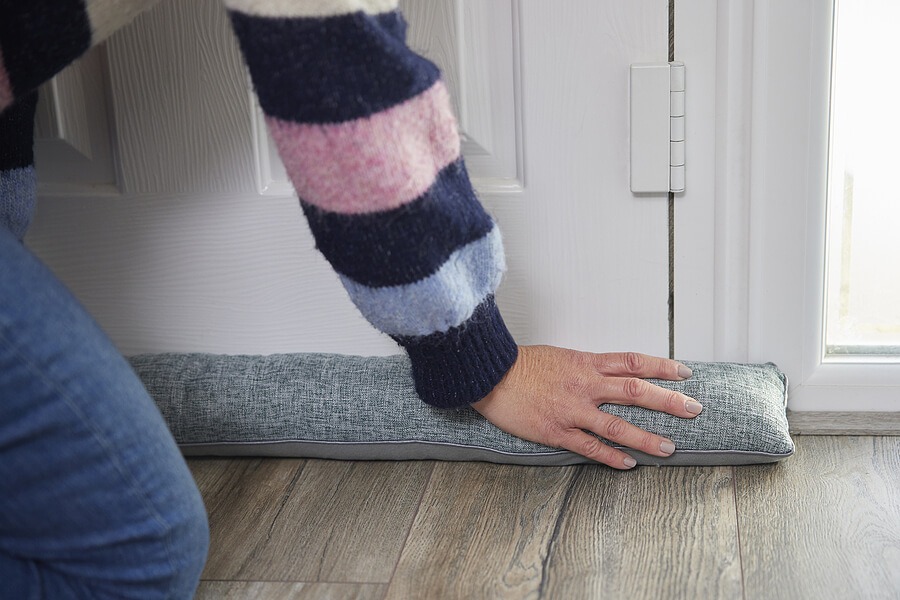Keeping bills low while keeping warm during winter is a dilemma many young people in student accommodation face.
When temperatures plummet and energy prices increase, searching for the most cost-effective heating alternatives is essential. Staying warm ensures your home and health are well looked after by preventing cold, dampness, and illness.
Learn how to heat your home cheaply and keep warm with our budget-friendly, practical advice.
Hot water bottle
Never overlook the humble hot water bottle, a speedy and cost-efficient way to stay warm on a cold winter’s day. Hot water bottles are perfect for study days, television evenings, or when you’re idle.
Invest in a good quality, reliable hot water bottle and always use a cover or tea towel to prevent burning. Never fill a hot water bottle all the way to the top, and wait for the boiled water to cool slightly before pouring. Once you’ve let out the excess air, secured the screw top, and dried the outside, your hot water bottle is ready to start warming your body.
Electric blanket
There are two main types of electric blankets, both excellent and cheap heating ideas that won’t break the bank.
One is an electric blanket that resembles a regular bed sheet, fitted over your mattress and warming your bed from the bottom up. Most come with several heat and timer settings so you can find the perfect temperature for a restful night.
The other electric blanket option looks like a typical blanket, and you can use it on your bed, lying on the sofa, or even sitting at your desk. Again, the temperature and duration are usually adjustable, so you can keep warm while you sleep, rest, or work.
Despite requiring a plug socket, electric blankets are surprisingly cheap to run, especially compared to the cost of putting on your heating. As of April 2022, an electric blanket costs around 23p a night (based on eight hours of use), at around 3p per hour.
To keep costs lower, opt for electric blankets with variable heat settings, dual controls, and temperature sensors, which turn the blanket off when your body reaches a specific temperature.
Rugs and soft furnishings

Using soft furnishings can drastically raise the temperature of your student home.
Rugs are heat-trapping furnishings that keep warmth within the house — perfect if you want to maximise the efficiency of your central heating system. They are especially useful in homes without carpets or older properties with less insulation.
Cold air usually runs upward from the bottom of the house, and layering a rug forms a barrier and stops the air from reducing your home’s temperature. Thick felt rugs and rug pads will work best, and those with a tog rating between one and two.
Hanging blankets on the wall is another hack for houses with limited insulation. The blankets keep warm air inside and prevent crucial heat loss. They’re also an excellent excuse to decorate your student room and home in a unique and stylish way.
Candles
If your university accommodation or student house allows candles, they can be a great way to heat a home cheaply and make the area smell marvellous.
Get into the winter spirit with autumn or Christmas scents — just make sure never to leave them unattended and blow them out when you leave the room.
Cling film windows
One of the most cost-effective heating tricks is to cling film your windows. In homes without double glazing, colder spells can be particularly brutal, as the lack of insulation means more cold air enters while heat escapes.
Cling film is a budget-friendly material that adds an extra layer of insulation for drafty windows. It helps trap a small layer of air and stop any warmth from escaping.
To apply, simply clean the window, measure the cling film, make sure the window is slightly wet, and then apply the wrap to the glass while pressing out air bubbles.
Draught excluder

Draught excluders do precisely as the name suggests — prevent cold draughts and keep warm air inside your home.
They’re usually placed by front or back doors and large windows, or any areas where you usually feel a breeze. You can also put them by internal doors and turn on specific radiators. This isolates the heat, trapping it all in one room, and lowers your bills as you won’t heat unused parts of the house.
You can buy a decent draught excluder from around £10, or get crafty and make your own from old jeans, jumpers, or bedding.
Check your radiators
Before the colder months get underway, ensure your radiators are in good working condition.
Faulty radiators could mean you need to heat your home for longer to reach a warm temperature, raising your gas or electric bills.
If you find any cold spots on the radiator or find some aren’t working entirely, tell your landlord and ask them to send an expert to confirm the problem.
Open blinds and curtains
While it’s tempting to keep your blinds or curtain closed all day to create warmth, opening them on a sunnier day actually helps heat your home a budget.
The sun heats the room and items within it naturally, creating warmth that can be retained for longer throughout the day. When the evening rolls around, and you close the curtains, your home will be cosy and better heated.
Rearrange furniture
Winter is a great time to indulge in a spot of redecorating, and not just for aesthetic reasons.
Pulling furniture away from radiators ensures there is enough space around them to heat the home properly. Warm air can travel further, making your home much more comfortable.
Sofas or beds in front of radiators can block heat from circulating, leading to cold rooms and wasted heating costs. If blocked for prolonged periods, this can cause a house-wide pressure imbalance that disrupts the home’s entire heat flow system.
Pickard Properties is on hand to provide a cosy and comfortable home this winter with a range of excellent standard student properties, ranging from one-bedroom flats to eight-bedroom houses. Browse our available selection now.

![[alt text]](https://pickardproperties.co.uk/wp-content/themes/pickard-properties/assets/dist/images/yorkshire-award.png)
![[alt text]](https://pickardproperties.co.uk/wp-content/themes/pickard-properties/assets/dist/images/insider-award.png)
![[alt text]](https://pickardproperties.co.uk/wp-content/themes/pickard-properties/assets/dist/images/labc-award.png)